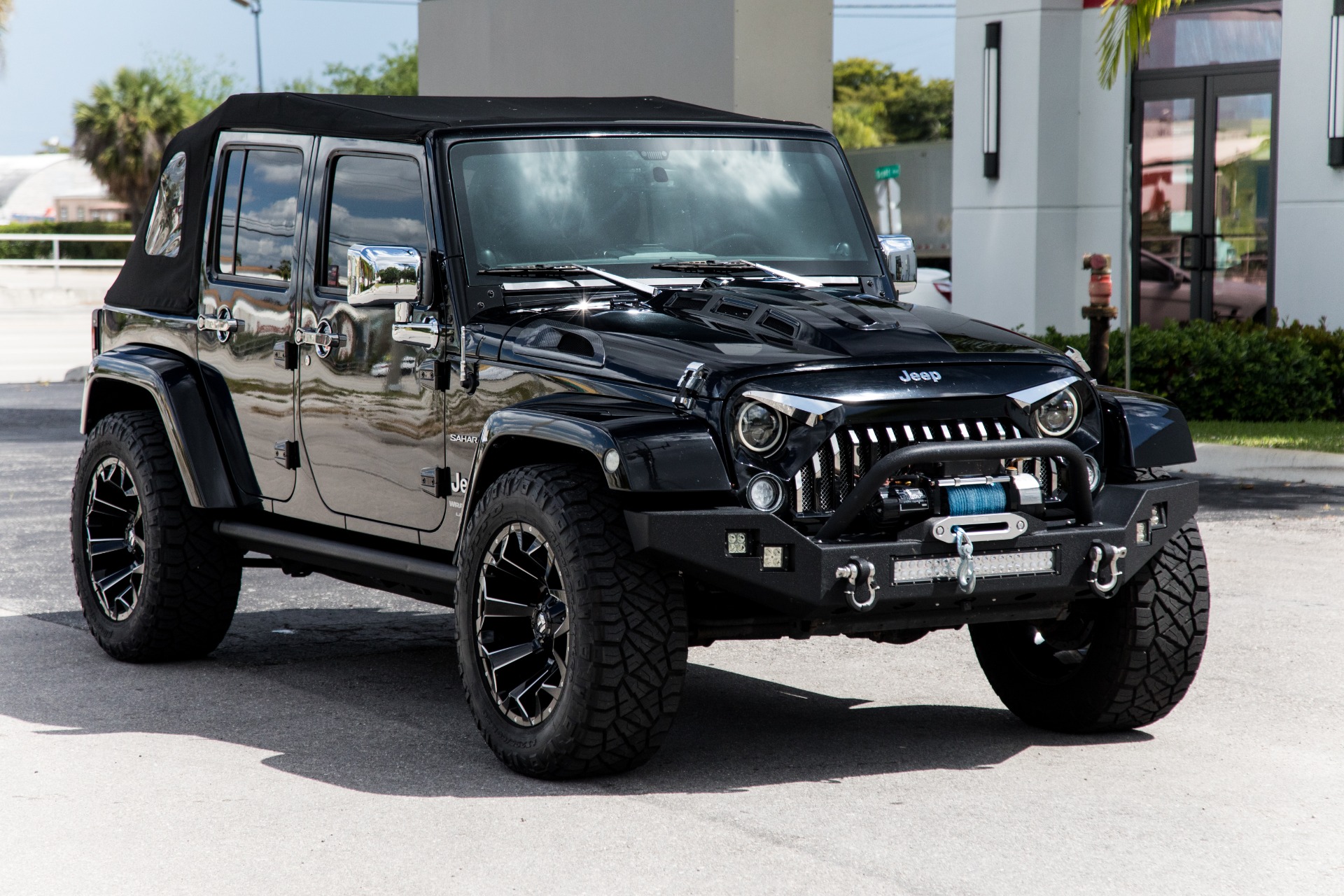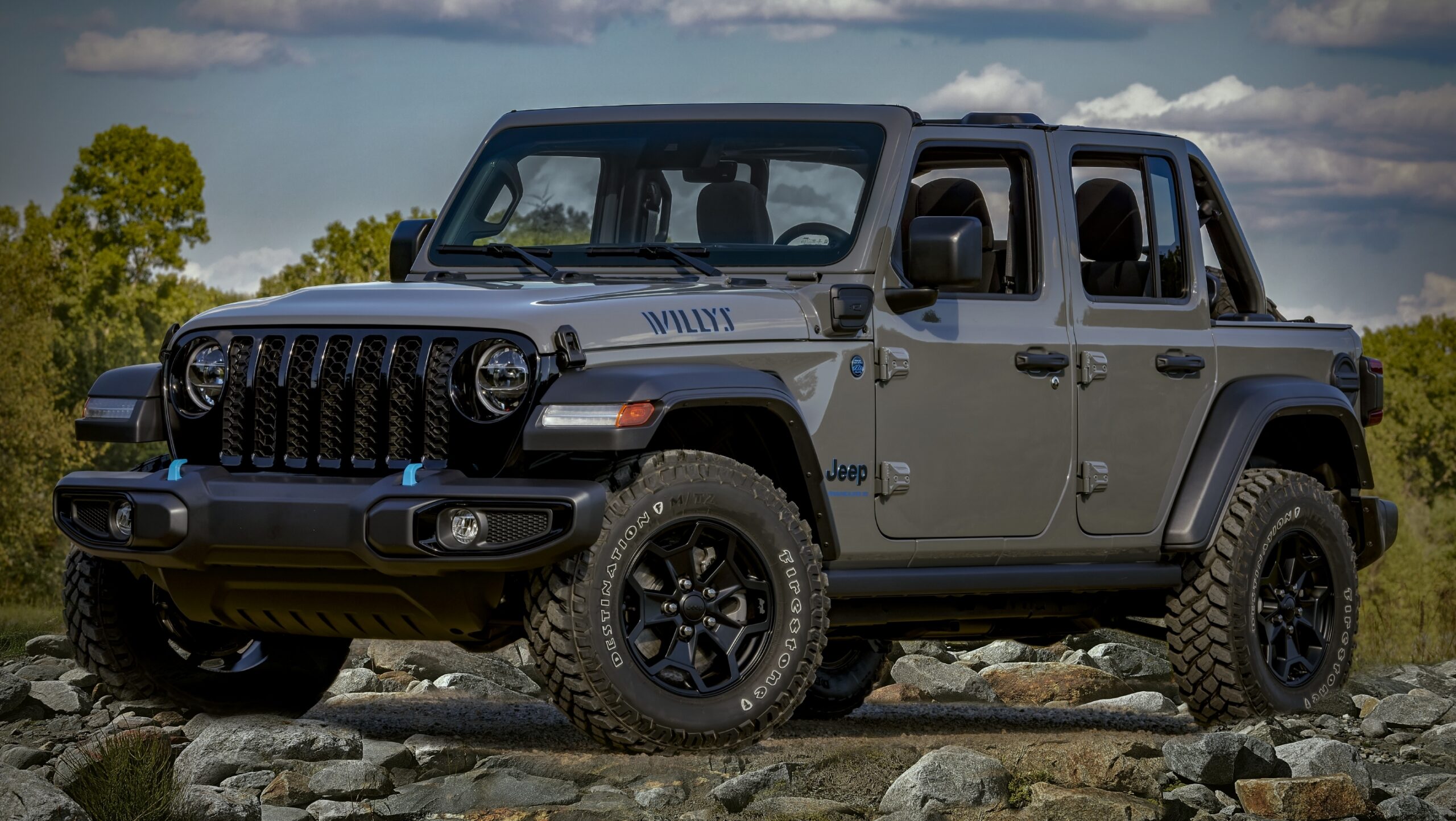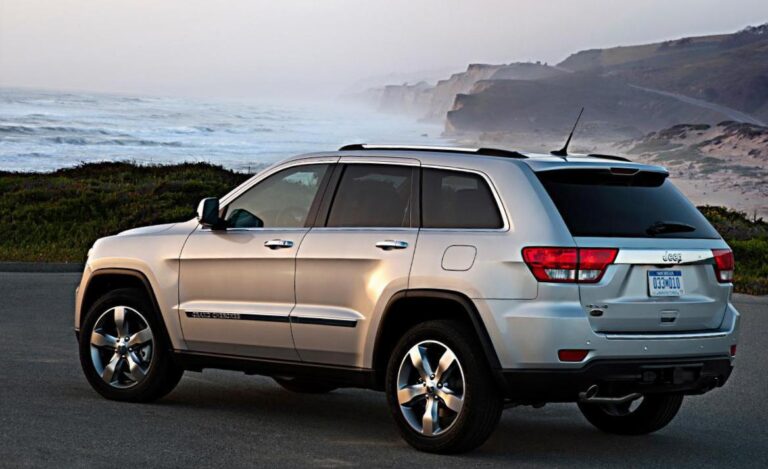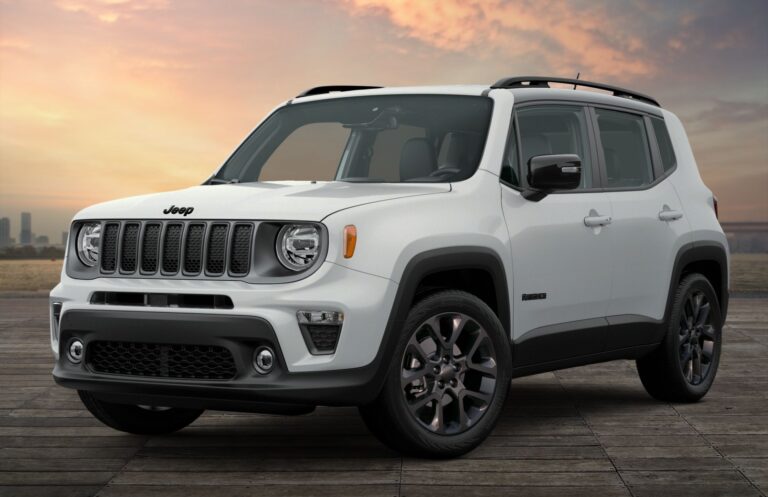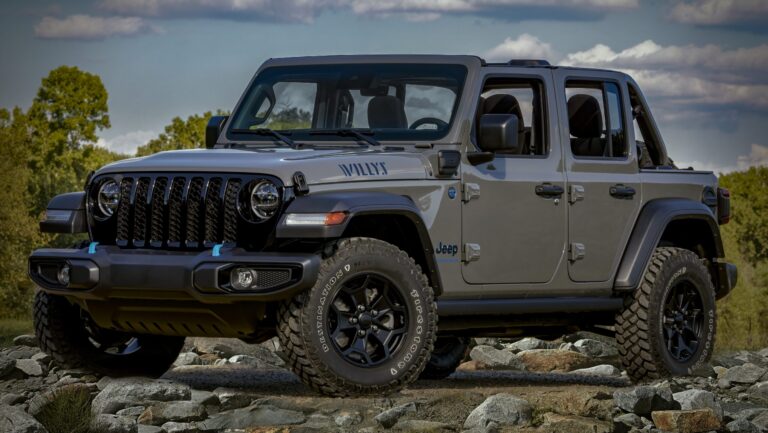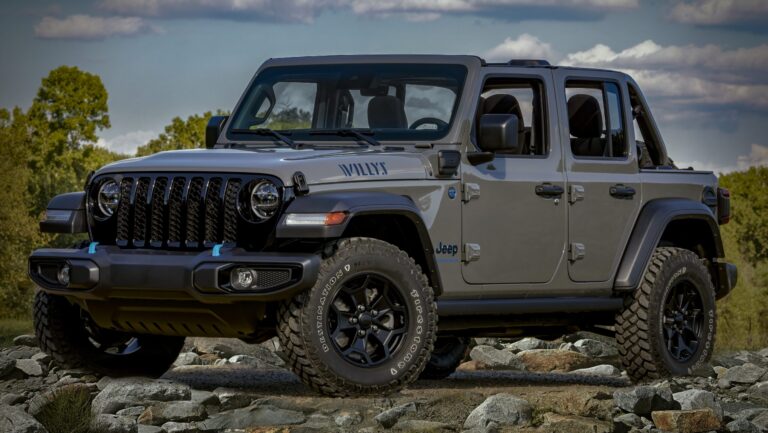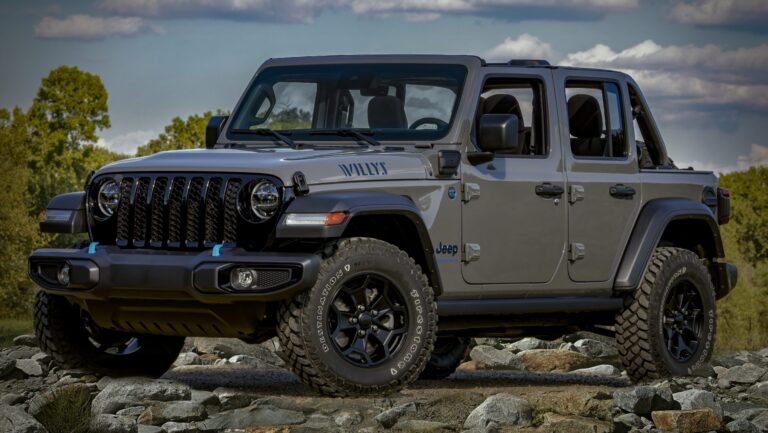Wrangler Jeep Gas Mileage: A Comprehensive Guide to Fuel Efficiency
Wrangler Jeep Gas Mileage: A Comprehensive Guide to Fuel Efficiency jeeps.truckstrend.com
The Jeep Wrangler. An icon of adventure, off-road prowess, and freedom. For decades, it has captured the hearts of enthusiasts drawn to its rugged capability and distinctive open-air experience. However, alongside its legendary status, another characteristic often enters the conversation: its gas mileage. For prospective buyers and current owners alike, understanding Wrangler Jeep gas mileage isn’t just about fuel costs; it’s about optimizing performance, planning adventures, and making informed decisions about this unique vehicle.
Unlike many vehicles where fuel economy is a primary selling point, the Wrangler’s design priorities lean heavily towards off-road capability, durability, and a classic, boxy aesthetic. These very attributes, while enhancing its adventurous spirit, often work against optimal aerodynamics and lightweight construction, which are crucial for high fuel efficiency. This article will delve deep into the multifaceted world of Wrangler Jeep gas mileage, exploring the factors that influence it, the variations across different models and powertrains, and practical strategies to maximize every drop of fuel.
Wrangler Jeep Gas Mileage: A Comprehensive Guide to Fuel Efficiency
Understanding Wrangler Gas Mileage: The Basics
At its core, gas mileage refers to the number of miles a vehicle can travel per gallon of fuel (MPG). For the Jeep Wrangler, this figure is a complex interplay of engineering, design, and external factors. The Environmental Protection Agency (EPA) provides estimated MPG figures for new vehicles under controlled conditions. While these figures offer a standardized comparison, real-world Wrangler gas mileage can vary significantly due to a multitude of variables.
The importance of understanding your Wrangler’s MPG extends beyond your wallet. It influences your vehicle’s range, how often you’ll need to refuel on long trips or remote trails, and even your environmental footprint. For many Wrangler owners, the unique experience and unparalleled capability outweigh the compromise in fuel economy, but knowledge empowers better management.
A Deep Dive into Wrangler Powertrains and Their MPG
Over the years, the Jeep Wrangler has offered a variety of engines, each with its own fuel efficiency characteristics. The current JL generation (2018-present) offers the most diverse lineup, dramatically impacting gas mileage figures.
1. The 3.6L Pentastar V6 Engine
![]()
The venerable 3.6-liter Pentastar V6 has been the workhorse of the Wrangler lineup for years. Known for its reliability and adequate power, it’s a popular choice for those seeking a balance of performance and traditional Jeep feel.
- Characteristics: Naturally aspirated, robust, proven.
- MPG Range (Approximate, JL Generation):
- 2-Door: 17-20 MPG combined
- 4-Door (Unlimited): 17-20 MPG combined

- Considerations: Often paired with an 8-speed automatic transmission, which helps optimize efficiency compared to older 5-speed automatics or 6-speed manuals.

2. The 2.0L Turbo I4 Engine
Introduced with the JL generation, this turbocharged inline-four offers a different driving experience, emphasizing torque at lower RPMs and often slightly better fuel economy, especially in city driving.
- Characteristics: Turbocharged, mild-hybrid (eTorque) system often paired, responsive.
- MPG Range (Approximate, JL Generation):
- 2-Door: 21-23 MPG combined
- 4-Door (Unlimited): 21-23 MPG combined
- Considerations: While it might offer better MPG, some drivers prefer the linear power delivery of the V6. The eTorque system aids in stop-start scenarios and provides a small torque boost.
3. The 3.0L EcoDiesel V6 Engine (Discontinued for New Orders)
For a period, Jeep offered a diesel option, appealing to those seeking increased torque for towing and potentially better range, especially on highways.
- Characteristics: High torque, better highway range, diesel fuel.
- MPG Range (Approximate, JL Generation):
- 4-Door (Unlimited): 22-25 MPG combined
- Considerations: While it offered improved MPG, the higher cost of diesel fuel and specific maintenance requirements were factors. It has since been discontinued for new orders in the Wrangler.
4. The 4xe Plug-in Hybrid
The Wrangler 4xe represents a significant leap in efficiency for the brand, combining a 2.0L turbo engine with two electric motors and a battery pack. It offers an all-electric range before switching to hybrid mode.
- Characteristics: Plug-in hybrid, significant all-electric range, powerful.
- MPG Range (Approximate, JL Generation):
- MPGe (Miles Per Gallon Equivalent): 49 MPGe combined (when utilizing electric power)
- Hybrid Mode (Gas Only): 20 MPG combined
- All-Electric Range: Approximately 21-25 miles
- Considerations: The true "gas mileage" depends heavily on how often it’s charged and how much the electric range is utilized. For short commutes, it can effectively operate as an EV, consuming very little gasoline.
5. The 6.4L V8 (Rubicon 392)
At the opposite end of the spectrum is the high-performance Rubicon 392, featuring a potent V8 engine. This model prioritizes raw power and acceleration over fuel economy.
- Characteristics: High horsepower, muscular V8 sound, extreme performance.
- MPG Range (Approximate, JL Generation):
- 4-Door (Unlimited): 13-14 MPG combined
- Considerations: This model is designed for enthusiasts who demand maximum power and are willing to accept significantly lower fuel efficiency as a trade-off.
Factors Significantly Impacting Your Wrangler’s Fuel Economy
Beyond the engine choice, numerous other elements contribute to your Wrangler’s real-world gas mileage. Understanding these can help you manage expectations and optimize your vehicle’s efficiency.
1. Vehicle Configuration and Weight
- 2-Door vs. 4-Door (Unlimited): The 2-door Wrangler is lighter and often slightly more aerodynamic, resulting in marginally better MPG than the heavier, longer 4-door Unlimited models.
- Soft Top vs. Hard Top: Hard tops are generally heavier and can slightly increase weight, though the aerodynamic difference is usually negligible compared to other factors.
2. Tires and Wheels
- Tire Size: Larger diameter tires require more energy to rotate, reducing MPG.
- Tire Weight: Heavier tires and wheels increase unsprung weight, impacting efficiency.
- Tread Pattern: Aggressive, knobby off-road tires (like mud-terrains) have higher rolling resistance than all-terrain or highway tires, significantly decreasing MPG.
3. Lift Kits and Aerodynamics
- Lift Kits: Raising the vehicle increases its frontal area and disrupts airflow, leading to greater aerodynamic drag. This is one of the most significant contributors to reduced MPG in modified Wranglers.
- Suspension Geometry: Changes can subtly affect alignment and rolling resistance.
4. Aftermarket Accessories
- Heavy Bumpers & Winches: Adding substantial weight to the front and rear.
- Roof Racks & Rooftop Tents: Create significant aerodynamic drag and add weight.
- Auxiliary Lighting: While minor, every added component contributes to weight and sometimes drag.
- Full Spare Tire/Mounts: Especially larger ones, add considerable weight.
5. Driving Habits
- Aggressive Acceleration & Braking: Rapid changes in speed consume far more fuel than smooth, gradual inputs.
- High Speeds: Aerodynamic drag increases exponentially with speed, meaning driving 75 mph consumes much more fuel than 60 mph.
- Excessive Idling: Modern engines use virtually no fuel when coasting, but idling still burns gas for zero miles.
- Off-Road Driving: Low-range gearing, navigating obstacles, and soft terrain significantly reduce efficiency.
6. Vehicle Maintenance
- Tire Pressure: Underinflated tires increase rolling resistance.
- Air Filter: A clogged air filter restricts airflow to the engine, reducing efficiency.
- Spark Plugs & Fuel Injectors: Worn or dirty components can lead to inefficient combustion.
- Oil Type: Using the recommended viscosity oil reduces engine friction.
7. Terrain and Weather
- Hills and Mountains: Driving uphill requires more power and thus more fuel.
- Headwinds: Strong headwinds increase aerodynamic drag.
- Cold Weather: Engines take longer to reach optimal operating temperature, and cold dense air can affect performance. Winter fuel blends can also have slightly lower energy content.
Tips and Strategies to Improve Your Wrangler’s Gas Mileage
While the Wrangler may never be a fuel-sipper, there are actionable steps you can take to maximize its efficiency.
- Adopt Smooth Driving Habits: Accelerate gently, anticipate stops, and maintain a consistent speed. Use cruise control on highways where appropriate.
- Monitor Your Speed: Reduce highway speeds. Even dropping from 75 mph to 65 mph can yield noticeable improvements.
- Maintain Proper Tire Pressure: Check your tire pressure regularly (at least once a month) and inflate to the manufacturer’s recommended PSI, found on a sticker inside your driver’s side door jamb.
- Regular Vehicle Maintenance: Adhere to your Wrangler’s maintenance schedule. Replace air filters, spark plugs, and fluids as recommended.
- Reduce Unnecessary Weight: Remove heavy items from your cargo area that you don’t need for daily driving.
- Minimize Aerodynamic Drag: Remove roof racks, light bars, and other external accessories when not in use. Consider removing your soft top or hard top only when you truly plan to enjoy the open-air experience, as they contribute to aerodynamics.
- Plan Your Routes: Combine errands into a single trip to reduce cold starts and stop-and-go driving.
- Consider Tire Choice: If your Wrangler is primarily a daily driver, opt for less aggressive all-terrain tires over mud-terrains for better rolling resistance and noise reduction.
- Utilize 4xe Charging: If you own a Wrangler 4xe, maximize your electric driving by charging it diligently at home or public charging stations. This is the most significant way to save on fuel costs for 4xe owners.
The Cost of Ownership: Is Wrangler MPG Worth It?
For many, the question isn’t just "What’s the MPG?" but "Is the MPG worth the experience?" Owning a Jeep Wrangler is often about lifestyle and capability more than pure economic efficiency.
- Unmatched Capability: No other vehicle offers the same combination of off-road prowess, removable doors/roof, and iconic design.
- High Resale Value: Wranglers historically hold their value exceptionally well, offsetting some of the higher fuel costs.
- The "Jeep Wave": There’s an intangible community and camaraderie that comes with owning a Wrangler.
- Versatility: From daily commutes to serious rock crawling, the Wrangler adapts (with varying degrees of efficiency).
Ultimately, the "worth" of Wrangler MPG is subjective. If fuel economy is your absolute top priority, a Wrangler might not be your first choice. But if you value adventure, customization, and a unique driving experience, the fuel cost becomes a necessary, often acceptable, part of the package.
Estimated Fuel Economy and Annual Cost Comparison (Wrangler JL Generation)
This table provides estimated EPA combined MPG for various 2023 Jeep Wrangler JL configurations and an estimated annual fuel cost, assuming 15,000 miles driven per year and a hypothetical average fuel price of $3.50 per gallon (gas) or $4.00 per gallon (diesel). Actual costs will vary based on driving habits, fuel prices, and maintenance.
| Model / Powertrain | Configuration | Transmission | EPA Combined MPG (Est.) | Est. Annual Fuel Cost (15,000 miles) | Notes |
|---|---|---|---|---|---|
| 3.6L Pentastar V6 | 2-Door | 6-Speed Manual | 19 MPG | $2,763 | Classic choice, good balance. |
| 3.6L Pentastar V6 | 2-Door | 8-Speed Auto | 20 MPG | $2,625 | Slightly better with automatic. |
| 3.6L Pentastar V6 | 4-Door Unlimited | 8-Speed Auto | 20 MPG | $2,625 | Most popular configuration. |
| 2.0L Turbo I4 | 2-Door | 8-Speed Auto | 22 MPG | $2,386 | Good city efficiency, responsive. |
| 2.0L Turbo I4 | 4-Door Unlimited | 8-Speed Auto | 22 MPG | $2,386 | Often includes eTorque mild-hybrid. |
| 3.0L EcoDiesel V6 | 4-Door Unlimited | 8-Speed Auto | 24 MPG | $2,500 (Diesel) | Discontinued for new orders, high torque. |
| 2.0L Turbo 4xe PHEV | 4-Door Unlimited | 8-Speed Auto | 49 MPGe / 20 MPG (hybrid) | $1,071 (Electric + Gas) | Highly dependent on charging habits. |
| 6.4L Rubicon 392 V8 | 4-Door Unlimited | 8-Speed Auto | 14 MPG | $3,750 | Performance-oriented, lowest MPG. |
Note: MPGe (Miles Per Gallon Equivalent) for the 4xe factors in electricity consumption. The estimated annual fuel cost for the 4xe assumes a mix of electric and gasoline driving, with the potential for significant savings if charged frequently.
Frequently Asked Questions (FAQ) about Wrangler Jeep Gas Mileage
Q1: Is Wrangler gas mileage really that bad?
A1: Compared to sedans or most crossovers, yes, Wrangler gas mileage is generally lower due to its boxy shape, heavy-duty components, and off-road focus. However, with the introduction of the 4xe, there are now significantly more efficient options available.
Q2: Which Wrangler has the best gas mileage?
A2: The Wrangler 4xe plug-in hybrid offers the best fuel economy, particularly if you maximize its electric-only range. Among gasoline-only models, the 2.0L Turbo I4 generally provides slightly better MPG than the 3.6L Pentastar V6.
Q3: Does a lift kit affect MPG?
A3: Absolutely. Lift kits increase aerodynamic drag by raising the vehicle and often necessitate larger, heavier, and more aggressive tires, all of which significantly reduce gas mileage. It’s one of the biggest factors impacting efficiency in modified Wranglers.
Q4: How accurate are EPA estimates for Wranglers?
A4: EPA estimates are a good baseline for comparison, but real-world Wrangler gas mileage often varies. Factors like driving habits, terrain (especially off-roading), aftermarket modifications, and even weather can cause your actual MPG to be lower than the EPA sticker.
Q5: Can I improve my old Wrangler’s MPG?
A5: Yes, even for older models. Regular maintenance (tire pressure, clean air filter, tune-ups), adopting smoother driving habits, and removing unnecessary weight can all contribute to better fuel economy, regardless of the model year.
Q6: What’s the deal with the 4xe’s MPG?
A6: The Wrangler 4xe is a plug-in hybrid (PHEV). It has an all-electric range (around 21-25 miles) where it uses no gasoline. After the battery depletes, it operates as a traditional hybrid, combining electric motors with the 2.0L turbo engine. Its impressive 49 MPGe figure is achieved by factoring in the electric driving. If you consistently charge and drive within its electric range, your gasoline consumption can be minimal. If you rarely charge or drive long distances, its hybrid-mode MPG (around 20 MPG) will be closer to a standard gasoline Wrangler.
Conclusion
The Jeep Wrangler’s gas mileage is as unique and varied as the vehicle itself. From the traditional Pentastar V6 to the innovative 4xe plug-in hybrid and the powerful Rubicon 392, there’s a wide spectrum of fuel efficiency to consider. While its off-road DNA and iconic design inherently prioritize capability over ultimate fuel economy, understanding the factors at play and adopting smart driving and maintenance habits can significantly influence your real-world MPG.
Ultimately, choosing a Wrangler often means accepting a certain level of fuel consumption as a trade-off for unparalleled adventure, customization, and a strong sense of community. By being informed and proactive, Wrangler owners can strike a better balance between their passion for the open road (or trail) and the practicalities of fuel efficiency. The journey in a Wrangler is rarely about the destination alone; it’s about the experience, and managing its gas mileage is just another part of that rewarding adventure.
